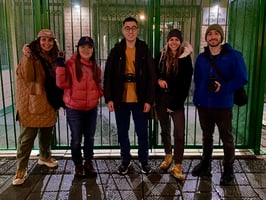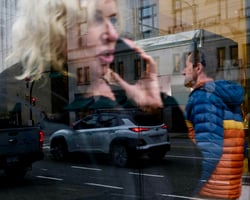Join Street16 on our small group street photography tours as we explore a variety of subjects and...
Street16 After Dark: Tips for Night Photography
Discover expert tips for capturing night photos and taking your photography skills to the next level.
Understanding the Challenges of Night Photography
Night photography poses unique challenges due to the absence of natural light. Unlike daytime photography, capturing night photos requires a different approach and an understanding of the obstacles at hand. One of the primary challenges lies in navigating low light conditions, which often result in grainy and noisy images. Furthermore, achieving proper exposure becomes a delicate balance between dark shadows and bright artificial lights that can create extreme contrast. Additionally, capturing sharp and clear images at night demands a steady hand or tripod.
To conquer these challenges, it is crucial to familiarize yourself with the technical aspects of night photography and ensure you have the right equipment. By comprehending and preparing for these hurdles, you can elevate your night photos to new heights, capturing images that truly stand out.
Exposure Settings for Night Photography

Mastering the art of exposure is essential for capturing breathtaking night photos that beautifully balance shadows with the glow of artificial lights. One valuable technique involves utilizing auto ISO and then adjusting your shutter speed and aperture to regulate the amount of light entering your camera. By using auto ISO, you allow your camera to automatically adjust the sensitivity of the image sensor based on the available light, ensuring that you capture the best possible exposure for your night photos.
Once you have set your camera to auto ISO, it's time to fine-tune your exposure settings. When shooting at night, longer shutter speeds can be incredibly effective in capturing the movement. A shutter speed of 1/15 or slower allows for a longer exposure adding an element of dynamism and excitement to your night photos.
In addition to adjusting the shutter speed, you can also play with the aperture settings to achieve the desired effect in your night photos. Setting the aperture to its widest opening, such as f/1.8 or f/2.8, allows for maximum light intake, which is crucial in low-light conditions. This wider aperture not only helps in obtaining a properly exposed image but also creates a beautiful bokeh, where the background lights appear as soft, out-of-focus orbs. This adds depth and visual interest to your photos, making them more interesting to viewers.
Composition Techniques for Night Photo s
s
By employing these composition techniques, you can seize the viewer's attention with truly captivating night photos. One technique that can add a touch of magic to your night photos is the use of leading lines. These are lines or shapes within the frame that guide the viewer's eye towards the focal point of the image. Whether it's a curving road or a row of streetlights, leading lines can create a sense of depth and draw the viewer deeper into the scene.
When capturing night photos, it is crucial to always be on the lookout for available light. While the absence of natural light can present challenges, there are often sources of artificial light that can be creatively used to your advantage. By finding and utilizing available light sources, you can enhance the mood and atmosphere of your night photos.
One way to look for available light is to explore your surroundings and take note of any light fixtures, street lamps, or illuminated signs that can serve as interesting elements in your composition. These light sources can add depth, dimension, and a sense of ambience to your photos. Additionally, keep an eye out for unique lighting situations such the shimmering glow of city lights reflecting on water. These elements can create dynamic scenes that truly stand out.
Silhouettes are a powerful way to convey emotion and create a sense of mystery in your night photos. To create a silhouette, position your subject in front of a bright light source, such as the moon or a streetlamp, and expose for the background instead of the subject. This will result in a darkened subject against a brightly lit background, creating a dramatic and visually striking effect.
By incorporating these composition techniques into your night photography, you can elevate your images to new heights. Remember to experiment, take risks, and let your creativity shine through. With practice and a keen eye for composition, you'll be able to capture captivating night photos that leave a lasting impression on viewers.
Post-Processing Tips to Enhance Your Night Photos
Post-processing is an essential step in enhancing your night photos. Start by adjusting the exposure, contrast, and white balance to bring out the details and colors in your images. Use noise reduction techniques to reduce any grain or noise caused by shooting at high ISOs. Experiment with different editing tools to enhance the mood and atmosphere of your night photos. For example, adding a vignette or adjusting the curves can create a dramatic effect. Lastly, don't forget to sharpen your images to enhance the details and make them appear more crisp.
By applying post-processing tips, you can take your night photos to the next level and make them truly stunning.


.jpg?height=200&name=Modern%20Blue%20Orage%20Yellow%20Photography%20Photography%20Workshop%20Advertising%20(Instagram%20Post).jpg)